Highly porous drug-eluting structures: from wound dressings to stents and scaffolds for tissue regeneration
- PMID: 23507890
- PMCID: PMC3568110
- DOI: 10.4161/biom.22838
Highly porous drug-eluting structures: from wound dressings to stents and scaffolds for tissue regeneration
Abstract
For many biomedical applications, there is need for porous implant materials. The current article focuses on a method for preparation of drug-eluting porous structures for various biomedical applications, based on freeze drying of inverted emulsions. This fabrication process enables the incorporation of any drug, to obtain an "active implant" that releases drugs to the surrounding tissue in a controlled desired manner. Examples for porous implants based on this technique are antibiotic-eluting mesh/matrix structures used for wound healing applications, antiproliferative drug-eluting composite fibers for stent applications and local cancer treatment, and protein-eluting films for tissue regeneration applications. In the current review we focus on these systems. We show that the release profiles of both types of drugs, water-soluble and water-insoluble, are affected by the emulsion's formulation parameters. The former's release profile is affected mainly through the emulsion stability and the resulting porous microstructure, whereas the latter's release mechanism occurs via water uptake and degradation of the host polymer. Hence, appropriate selection of the formulation parameters enables to obtain desired controllable release profile of any bioactive agent, water-soluble or water-insoluble, and also fit its physical properties to the application.
Keywords: biomaterials; controlled release; poly (dl-lactic-co-glycolic acid); porosity; tissue engineering.
Figures


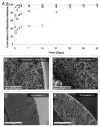




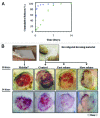
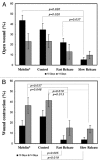

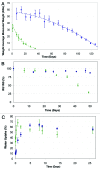





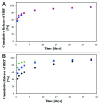
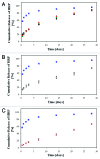

Similar articles
-
Paclitaxel-eluting composite fibers: drug release and tensile mechanical properties.J Biomed Mater Res A. 2008 Feb;84(2):313-23. doi: 10.1002/jbm.a.31286. J Biomed Mater Res A. 2008. PMID: 17607755
-
Drug-eluting medical implants.Handb Exp Pharmacol. 2010;(197):299-341. doi: 10.1007/978-3-642-00477-3_11. Handb Exp Pharmacol. 2010. PMID: 20217535 Review.
-
Novel farnesylthiosalicylate (FTS)-eluting composite structures.Eur J Pharm Sci. 2009 Jun 28;37(3-4):351-62. doi: 10.1016/j.ejps.2009.03.004. Epub 2009 Mar 21. Eur J Pharm Sci. 2009. PMID: 19491026
-
Novel bioresorbabale composite fiber structures loaded with proteins for tissue regeneration applications: microstructure and protein release.J Biomed Mater Res A. 2006 Dec 15;79(4):779-87. doi: 10.1002/jbm.a.30825. J Biomed Mater Res A. 2006. PMID: 16883584
-
Scaffold: a novel carrier for cell and drug delivery.Crit Rev Ther Drug Carrier Syst. 2012;29(1):1-63. doi: 10.1615/critrevtherdrugcarriersyst.v29.i1.10. Crit Rev Ther Drug Carrier Syst. 2012. PMID: 22356721 Review.
Cited by
-
Preparation of a Hydrogel Nanofiber Wound Dressing.Nanomaterials (Basel). 2021 Aug 25;11(9):2178. doi: 10.3390/nano11092178. Nanomaterials (Basel). 2021. PMID: 34578494 Free PMC article.
-
Sugarcane Bagasse-Derived Cellulose Nanocrystal/Polyvinyl Alcohol/Gum Tragacanth Composite Film Incorporated with Betel Leaf Extract as a Versatile Biomaterial for Wound Dressing.Int J Biomater. 2023 Jul 13;2023:9630168. doi: 10.1155/2023/9630168. eCollection 2023. Int J Biomater. 2023. PMID: 37485045 Free PMC article.
-
Characterization and antibacterial activity of cellulose extracted from Washingtonia robusta and Phoenix dactylifera L. impregnated with eugenol: Promising wound dressing.Heliyon. 2025 Jan 28;11(3):e42310. doi: 10.1016/j.heliyon.2025.e42310. eCollection 2025 Feb 15. Heliyon. 2025. PMID: 39968146 Free PMC article.
-
Fabrication and hemocompatibility assessment of novel polyurethane-based bio-nanofibrous dressing loaded with honey and Carica papaya extract for the management of burn injuries.Int J Nanomedicine. 2016 Sep 2;11:4339-55. doi: 10.2147/IJN.S112265. eCollection 2016. Int J Nanomedicine. 2016. PMID: 27621626 Free PMC article.
-
Freeze-Drying as a Tool for Preparing Porous Materials: From Proof of Concept to Recent Pharmaceutical Applications.AAPS PharmSciTech. 2025 Jun 3;26(5):159. doi: 10.1208/s12249-025-03117-4. AAPS PharmSciTech. 2025. PMID: 40461910 Review.
References
-
- Buttafoco L, Engbers-Buijtenhuijs P, Poot AA, Dijkstra PJ, Daamen WF, van Kuppevelt TH, et al. First steps towards tissue engineering of small-diameter blood vessels: preparation of flat scaffolds of collagen and elastin by means of freeze drying. J Biomed Mater Res B Appl Biomater. 2006;77:357–68. doi: 10.1002/jbm.b.30444. - DOI - PubMed
Publication types
MeSH terms
Substances
LinkOut - more resources
Full Text Sources
